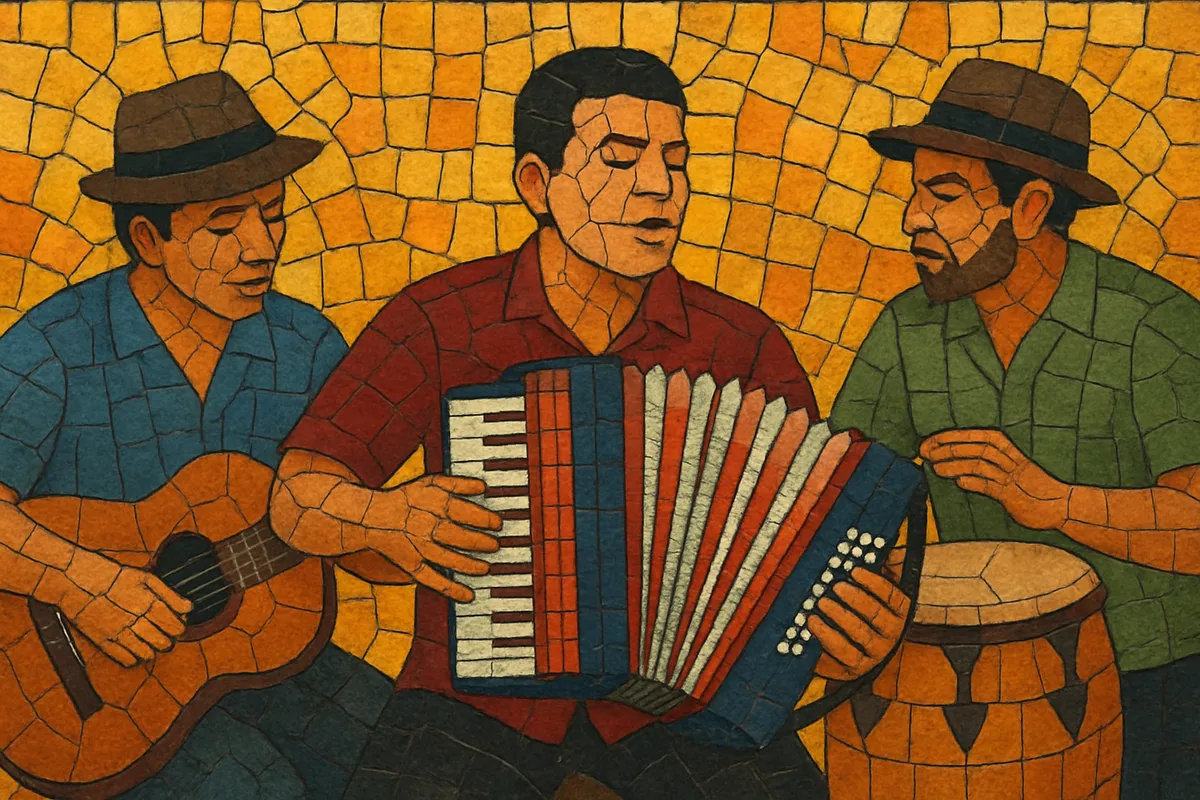Cumbia santafesina is a regional Argentine variant of cumbia that emerged in the province of Santa Fe. It preserves the two-step cumbia pulse while foregrounding melodic instruments (accordion, keyboards, or electric guitar) and romantic, narrative vocals.
Compared with Colombian cumbia and other Argentine strands, it tends to run at a moderate, danceable tempo and emphasizes lyrical themes of love, longing, everyday life, and neighborhood pride. Its arrangements balance a steady percussion bed (güiro, congas, drum kit) with a prominent bass tumbao and singable hooks, making it a staple of social dances and popular festivities across Argentina.
Cumbia entered Argentina via recordings and touring bands in the 1950s and 1960s, when Colombian cumbia (2569) and broader Latin tropical music began circulating. As the music localized, Santa Fe’s musicians absorbed the style and adapted it to local dance-hall contexts and instrumentation familiar to the Litoral region (where accordion traditions like chamamé (2433) were strong).
By the late 1960s, groups in Santa Fe began codifying a distinct approach: a mid-tempo cumbia groove, romantic vocal delivery influenced by bolero (2320) and Latin ballad (2085), and a lead role for accordion or, in some lineages, electric guitar. This period laid the groundwork for what would be called cumbia santafesina.
Through the 1980s and 1990s, Santa Fe bands built large regional followings. Two parallel lineages became especially visible: “con acordeón/teclados,” centered on accordion/keys as the melodic lead, and “con guitarra,” highlighting arpeggiated or melodic electric guitar lines. Lyrically, the style increasingly favored sentimental and romantic themes that connected with mass audiences.
From the 2000s onward, cumbia santafesina became a national touchstone of Argentine “tropical” music, with anthems heard at football stadiums, festivals, and family parties. Its melodic-romantic formula and steady dance pulse influenced later Argentine cumbia currents, including pop-oriented cumbia and, indirectly, the scene that set the stage for cumbia villera (2578). Today, classic bands continue to tour while younger acts refresh the sound with updated production and arrangements.


